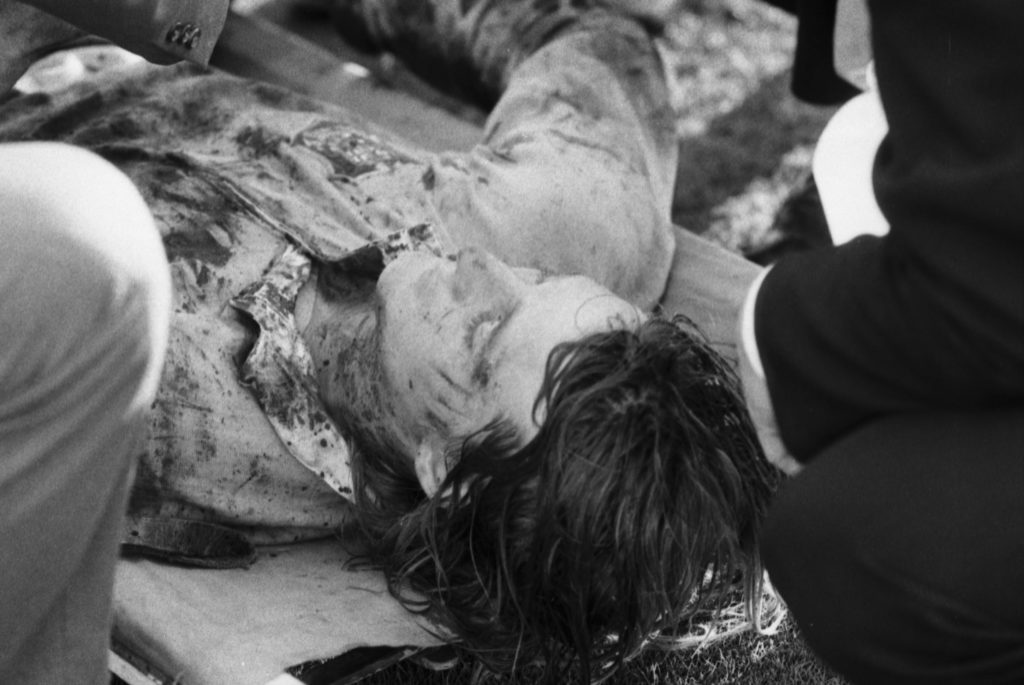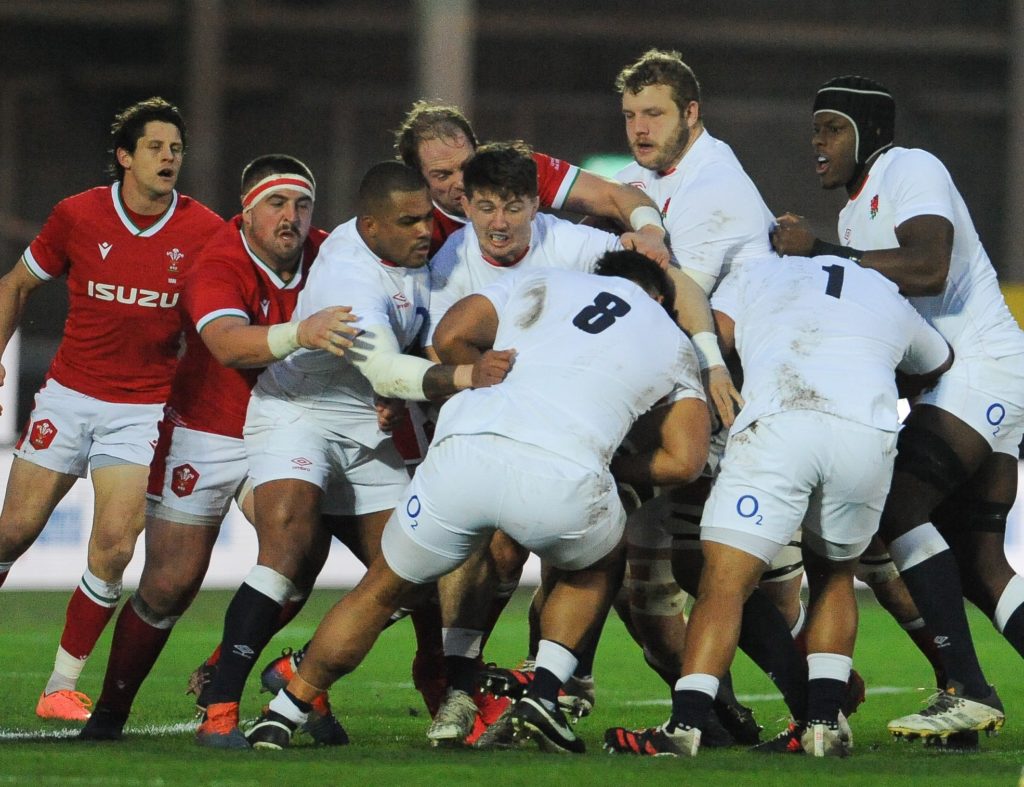A complaint has grown in recent years that rugby is now a collision sport, where once it was a contact. This line of argument is fallacious. Rugby has always been a collision sport. Its current crisis is no more or less than the natural conclusion of an arc that began the moment whoever first picked up the ball and ran.
Part of the problem is one of categorisation, or the lack of it. The term collision sport is relatively new. Its coining is usually credited to Vince Lombardi, the American football coach, when he said: “Football is not a contact sport; it’s a collision sport. Dancing is a contact sport.” There is a minority who attribute this quote to Lombardi’s contemporary, Duffy Daugherty, but the best estimate the internet can supply for when either man said it is 1963.
Consistent with this, a search of Google Scholar suggests the term was first used in academic papers in the late 1960s. The category of ‘contact sport’ would appear by the same measure to be about 30 years older. Usage of the term ‘collision sport’ grew gradually in the remaining decades of the 20th century, before exploding in the 21st, in which time there have been well over 3,000 academic articles alluding to it.
The first use in relation to rugby, according to the same search, came in a 1977 paper by one Ian Duthie Adams MD, who compiled an audit of the rugby injuries that were reported at the A&E department in his local hospital in Leeds and at a sports injury clinic nearby. “There has been widespread comment on the apparently increased number of injuries in Rugby Football,” he wrote presciently, “and in particular of the problem of head injury.

Later in the same paper, he added: “Rugby Football is a collision sport played with enjoyment by many.” So, rugby has long been talked of in such a way – and if this has not always been so, it is merely because no one had previously thought to invent the category that might separate it from a contact sport like association football.
The distinction lies in the nature of possession in the two sports, the original codes of football. In association football, the player in possession runs with the ball loose at the feet, while in rugby the ball is attached to the body. In the former, a player can be tackled without even being touched, but in rugby the only way to stop a player in possession is through what amounts to physical assault, even if it need not be particularly violent. And then, because the ball is attached to the carrier, the complicated question arises of what happens next. From this conundrum are derived most of the game’s arcane and violent rituals, its rucks and mauls, its scrums and line-outs.
All of this means that, to borrow from Lombardi/Daugherty, the word ‘contact’ scarcely does justice to what happens on a rugby field, and it never has. Self-evidently, though, the frequency and intensity of those collisions has escalated alarmingly in recent decades. People get very angry about this, as if there were a super villain somewhere who flicked a switch one day marked ‘power up rugby’.
The idea that rugby’s apocalyptic levels of battery – and with it the first instances of confirmed degenerative neurological conditions among its former players – is the result of a conscious decision, whether taken by supervillain or defence coach, is hopelessly wide of the mark, as is the notion that it would be easy enough to go back to how things were. Such thinking underestimates quite dangerously the gravity of rugby’s predicament.
The frequency and intensity of collisions has escalated alarmingly in recent decades. People get very angry about this, as if there were a super villain somewhere who flicked a switch one day marked ‘power up rugby’.
Because this is the fate of all collision sports, particularly those (ie both codes of North American football and of rugby) that involve multiple points of confrontation between teams moving in opposite directions. Under such circumstances, the premium on power, whether through heft, strength, speed or any combination of all three, is heightened.
Once that idea is admitted, the powering up of participants in a kind of arms race becomes an inevitability. This process was already well under way in rugby union, but there is no doubt too that professionalism super-fuelled it. Indeed, it was amateurism, the necessity among all players to pursue an alternative day job, that held rugby players back for so long.
Even in the amateur era, though, they were growing bigger. A study by Tim Olds of the University of South Wales in 2001 showed that the weight increase in elite rugby players around the world since 1905 outstripped that of the general population of young men in developed countries by more than 2.5 times, with the rate since 1975 three to four times that from 1905 to 1975.
Since professionalism, the game itself has changed dramatically, and that is almost entirely down to the fact that the players, teams and resources thrown at maximising their effectiveness have become so much bigger and better. This is not the result of some cynical decision designed to pervert the nature of the sport. This is the nature of the sport, its logical conclusion.

Which is a massive problem, now that the repercussions are starting to play out. Plenty of ideas have been put forward about what we can do to address the matter without changing that fundamental nature, but, short of removing rugby’s collision element altogether, in other words resorting to something like touch rugby, the effectiveness of any of the measures is doubtful.
The proper recognition and treatment of those with head injuries has become even more imperative than it ever was, but the fact those head injuries perceptible to pitch-side medics are almost certainly a mere fraction of the overall problem is one cause for alarm. And so is the fact that head injury is fundamental to the sport.
Current policy is designed to lower the height of the tackle. We might debate separately how best to achieve that (actual law change versus the red-card wild west at present), but even if a lowering of the tackle height is achieved, which it already has been, how much of a difference will it make? The latest results of the Professional Rugby Injury Surveillance Project suggest limited effectiveness of a policy that has been in place for four years. This should come as no surprise.
Using World Rugby’s own data, it is possible to calculate the sort of reduction in head injury we might expect if every upright tackler became bent at the waist. The head-injury rate when a tackler is upright is 44% higher than when bent at the waist. There were 164 head injuries from upright tacklers in World Rugby’s survey of a total of 611 head injuries. If, notionally, all of those tacklers had bent at the waist we might have expected that figure to drop to 114 (164 divided by 1.44). Which is a reduction of 50 head injuries from the original figure of 611, or just over 8%. That is if every upright tackler became bent at the waist. The real figure would likely be less. Better than nothing, but it hardly transforms the sport.
Players who have to stay on the field for 80 minutes will become even fitter than they are already; they will become more similar in shape and size; and they will absolutely not become any less powerful.
Another measure much discussed – and a part of the players’ 15 commandments, as submitted to World Rugby – is to end, or at least reduce, tactical substitutions. There are rugby reasons to experiment with this change, but it is unlikely to improve safety – and may even exacerbate the problem. Players who have to stay on the field for 80 minutes will become even fitter than they are already; they will become more similar in shape and size; and they will absolutely not become any less powerful.
The toll of a typical match will also be shared by fewer players. We would certainly see fewer examples of fresh ‘impact’ players entering the same pitch as others who are more fatigued, but we should not forget, either, that every time a fresh player comes on, another fatigued one is removed. The net effect on the collective vulnerability to injury is probably much the same. Research to date suggests that injury incidence does not increase significantly in the latter stages of a match.
The other great preoccupation of law makers is to make the game more attractive. The trouble with that impulse is that, in almost every case, it is in direct opposition to the directive to make the game safe. Take the maul, for example. Rugby remains embarrassed by it, just as it is by the scrum. Indeed, one of the key developments in all of this, just before professionalism, was the law change that awarded a scrum to the opposition every time a maul was stopped. The idea was to reduce the number of mauls. That was when the ruck became god and multi-phase rugby proliferated.
No one, bar the most indoctrinated (and not even a lot of those), has ever much liked a maul. There are, and have always been, calls to diminish it further. And yet the maul is just about the only passage of play in a rugby match that does not come with the threat of head injury. The formula is simple: make the game more entertaining, speed it up; make it safer, slow it down.

The conundrums are manifold and will not be solved by the glib rants of those who cry simply for the game to be depowered, to be returned to those innocent days before professionalism. The impulse to yearn for that is powerful and understandable, but one might just as realistically cry for the military to be depowered, for nuclear missiles to be exchanged for longbows.
The final recommendation of Unholy Union, the book I recently wrote with Mark Evans on rugby in the 21st century, is: ‘Drink beer. Not protein shake.’ It is also dismissed in the next paragraph as by far and away the least realistic of the recommendations, but the tension between beer and protein shake, between the amateur and the professional, the casual and the intense, is at the heart of all of this.
As the history of humanity shows, it is the latter ideology that will always win out, dragging everything else along, whether people like it or not. Rugby’s tragic flaw is that the more players improve, the more dangerous they become to each other. This reality cannot be undone by the odd tweak to a law.
Which leaves rugby with a terrible dilemma. Either settle for attempts at damage limitation or fundamentally change what it is. If the latter, it will no longer be rugby.
More stories from Michael Aylwin
If you’ve enjoyed this article, please share it with friends or on social media. We rely solely on new subscribers to fund high-quality journalism and appreciate you sharing this so we can continue to grow, produce more quality content and support our writers.



Comments
Join free and tell us what you really think!
Sign up for free